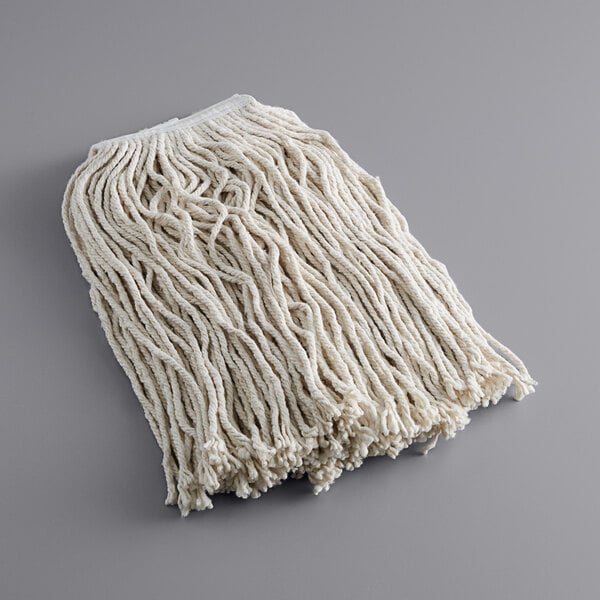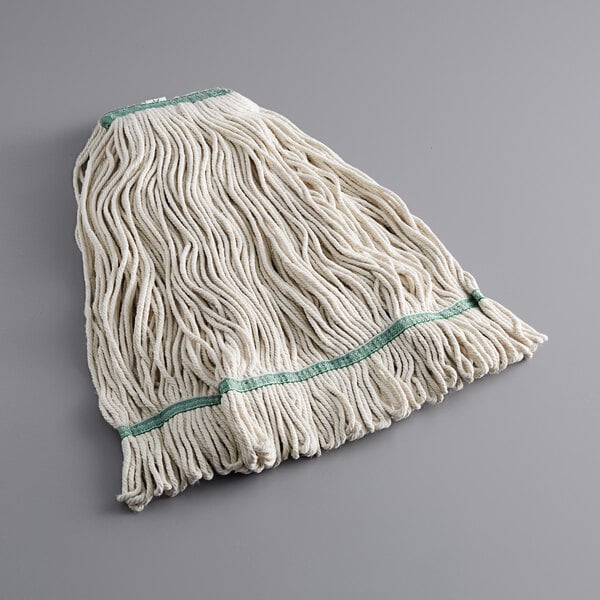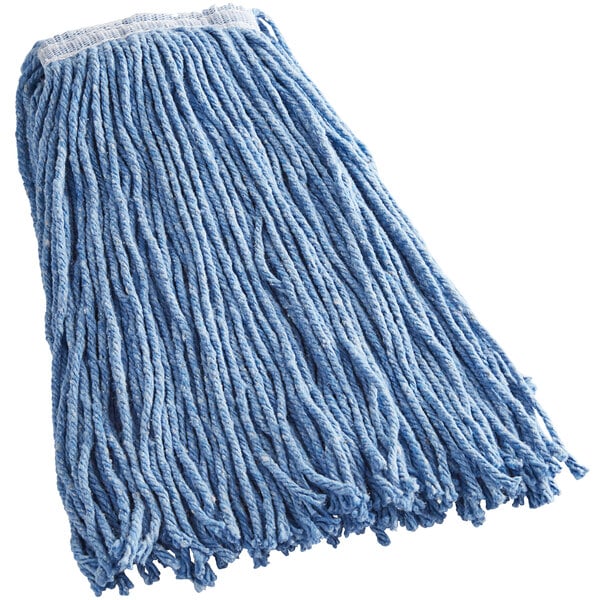Before deciding which type of mop system is best for you, familiarize yourself with some mop basics. Understanding these characteristics will help you make an informed choice.
Yarn Ply: Yarn ply indicates the number of fibers twisted together to make a single yarn strand in a mop. More plies mean more strength, though a higher ply count doesn't necessarily mean a better quality fabric. Additional strands add durability but also decrease absorbency. It's more efficient and cost-effective to choose a low-ply, high-quality yarn than a high-ply, low-quality yarn.
Sizes: When looking at mops, consider the application and the type of wringer being used. Both looped and cut-end mops are sized and measured in ounces. On this scale, the higher the ounce rating a mop has, the larger its head will be.
Antimicrobial: In some mops, there are fibers locked into the yarn that contain an antimicrobial additive. This additive helps protect the mop head from deteriorating by preventing the growth of bacteria, mold, mildew, or yeast in the mop head.
Headbands: Mop headbands come in two sizes: narrow and wide. Narrow headbands are 1" thick and typically used with stirrup or quick-release handles. Wide headbands are 5" thick so they work well with jaw-style handles. When it comes to material, mesh bands provide a non-abrasive scrubbing surface and allow the mop to dry quickly to prevent mildew growth.
Absorbency: Absorbency ratings are based on the size of the mop head and how much liquid it can hold. Follow the ranges below as a general guide to absorbency:
- Small mop heads hold 8 - 10 oz. of liquid
- Medium mop heads hold 16 - 20 oz. of liquid
- Large mop heads hold 24 - 32 oz. of liquid
- Extra-Large mop heads hold 32 - 40 oz. of liquid































